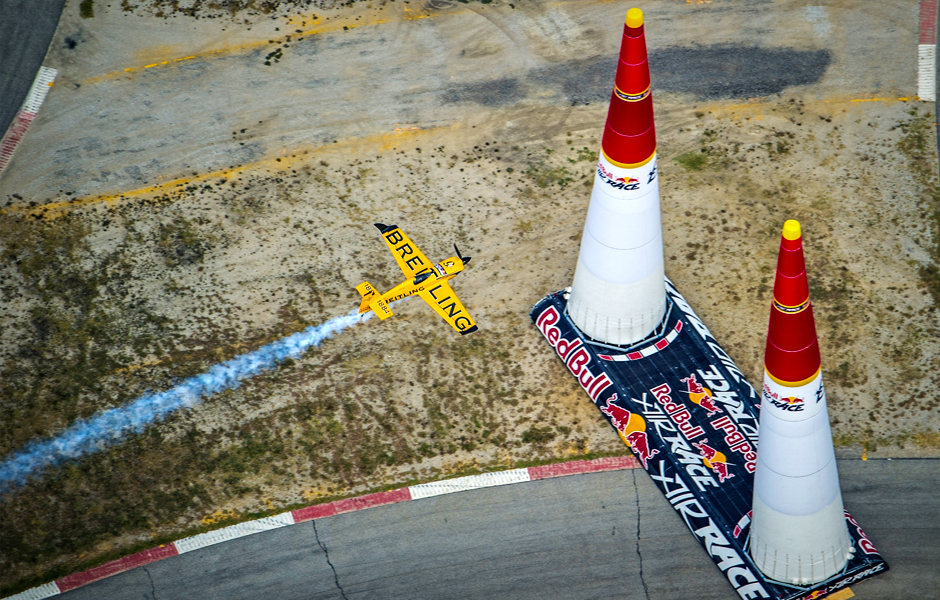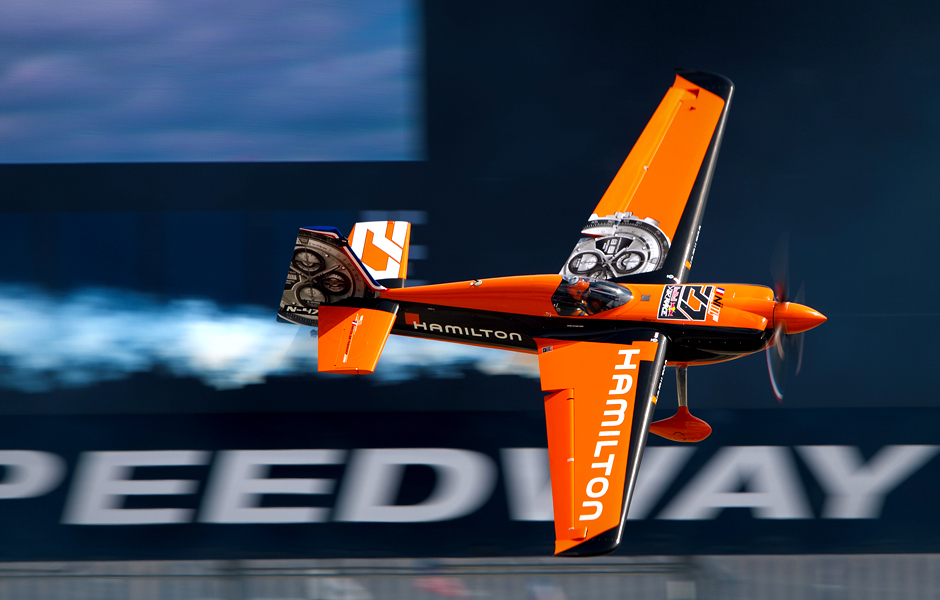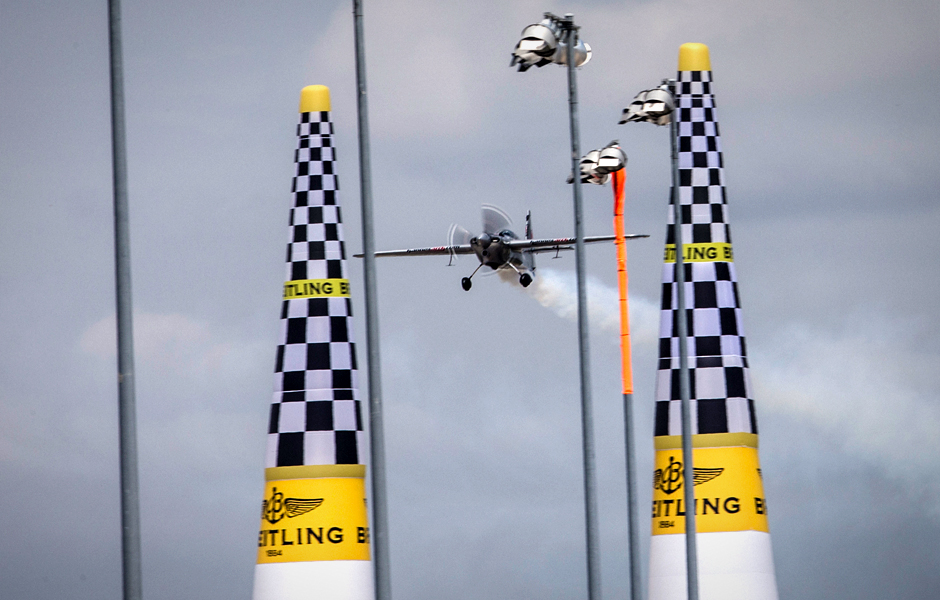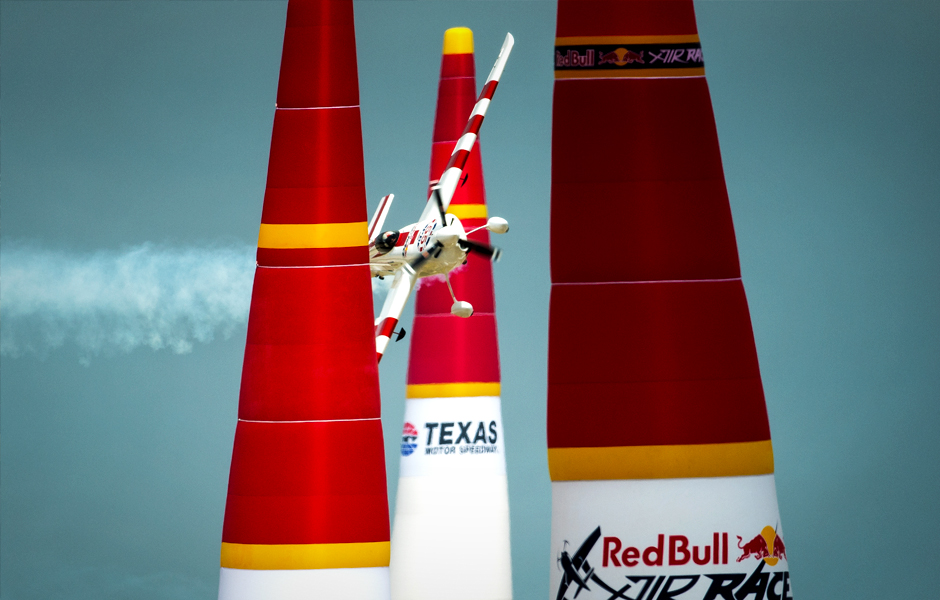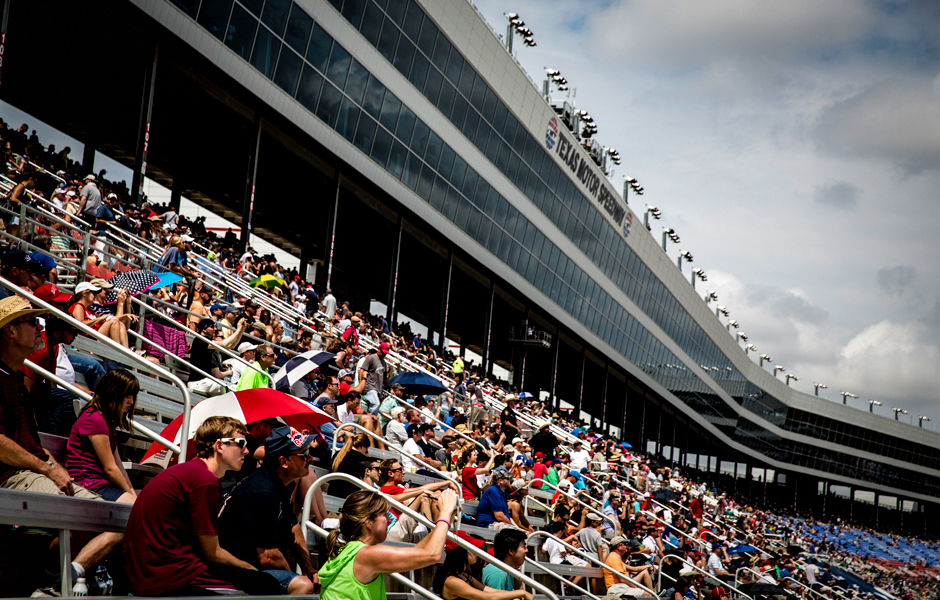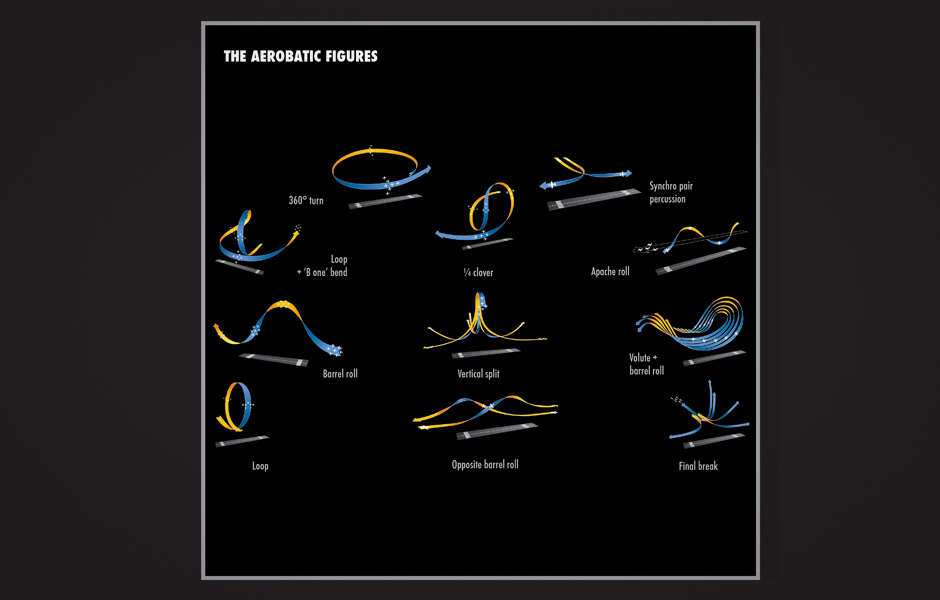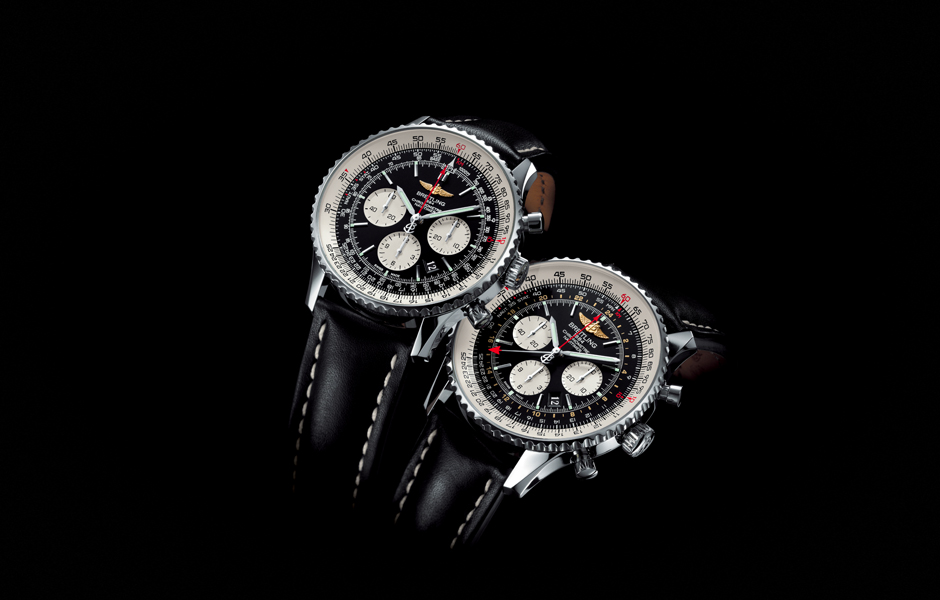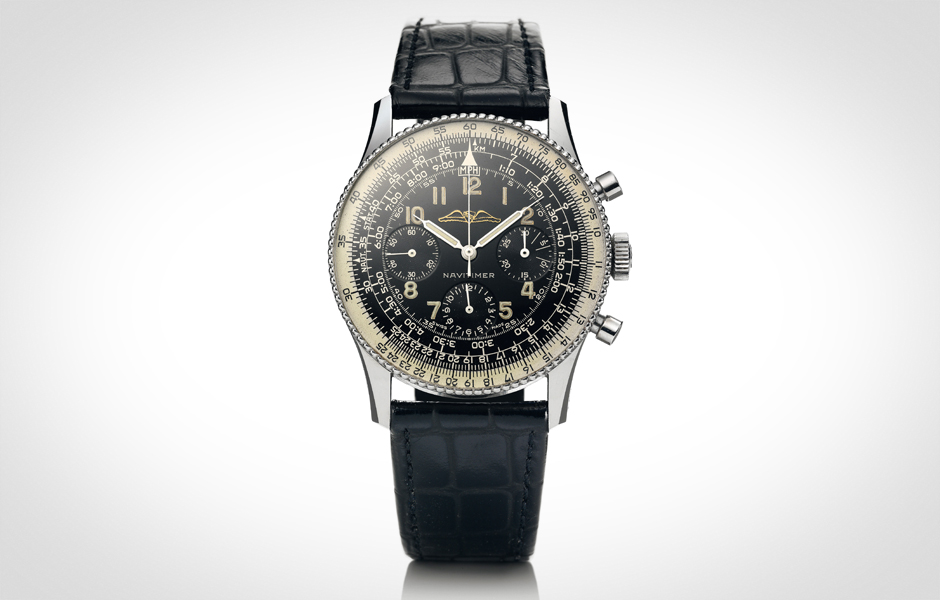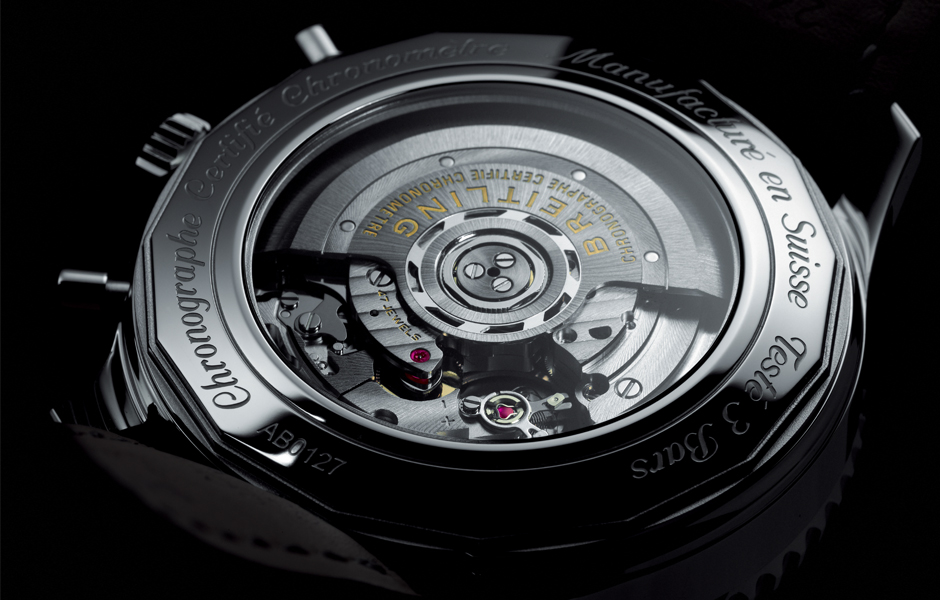The French accented voice of 27-year-old air racer Mika Brageot crackled in my ear, “Ok, take the stick.” With a brief flutter of panic I reached down and grabbed the controls of the EXTRA 330 LX acrobatic plane and pulled. The plane pitched back, and – before I knew it – I was hanging upside down, staring at the plains of Texas.
I had been wondering why Breitling had brought me to the heart of Texas to see an Air Race put on by an energy drink company. It was at this moment, as the world rushed past me, that it all came together.
The sense of exhilaration and pure, unadulterated freedom I experienced, as I pulled the plane back to level, didn’t just make me a lifelong air racing fan; it made me understand why a world class watch maker would not just sponsor an air race, but fly me all the way to Texas to see it.
To properly explain why, I need to start at the beginning.
What is Air Racing?
I arrived in Fort Worth Texas with as much knowledge about the Red Bull Air Races as the average American, which is to say not much. I had done my research, and I thought what I was about to witness sounded simple – on paper, at least.
The race consists of a course composed of giant inflatable pylons that the pilots maneuver around and between. In short, the Red Bull Air Race is the Formula One of the sky.
The reality is far crazier even than that sentence suggests; the entire racecourse was built inside the Texas Motor Speedway. Let that sink in for a second. Planes are flying at speeds of 230 mph inside the same space NASCAR drivers struggle to hit 200.
That kind of speed translates to a 180-pound pilot trying to fly around a gate less than a hundred feet off the ground, while experiencing a force of ten Gs – around 1,800 pounds.
The racers
All that sounded crazy enough, but that was before I had the chance to meet with one of the pilots, Nigel Lamb. Lamb is the star of the Breitling team, one of the best air racers in the world, and just the sort of quixotic personality one might expect to find slaloming at high speeds and low altitudes.

Born in Rhodesia – what is now Zimbabwe – of English parents, Lamb seems like he could be the product of a different era. At 58, he is a professional pilot and a semi-professional dashing adventurer . He’s the sort of Brit you can imagine exploring the upper reaches of the Nile in an earlier century.
During our interview, he admitted he got into air racing, in part, to recapture the barnstorming spirit of an earlier age. He is a hard man not to like, and, after watching him push his air racer to the absolute limit in the training sessions, an even harder one not to be impressed by.
Wheels up
Shortly after talking to Nigel, I got to see him in action, as he took practice runs through the course. On his first lap, he set a blistering time, as his yellow and black aircraft twisted between pylons at an altitude lower than my skybox seat. On his second pass, he came in fast again. In a flash, he pulled hard out of the stadium. His line was too aggressive and it was either pull up or wind up as a smear on the infield. That’s the thin line between victory and catastrophe in air racing.
That line was reinforced a little later on during the Challenger Cup race qualifying, where pilots compete to see who will be the next to join the elite Master Class.
By the time the race began, the broad Texas sky had darkened to an ominous cast. In the distance, some obscure and angry god was hurling thunderbolts at the Dallas suburbs. In the Texas Motor Speedway the wind had risen and the 128-foot tall pylons were bending in the wind. It was in these conditions that Mika Brageot, another Breitling pilot, took to the skies.
I don’t know how, given the windy conditions, but Brageot held it together long enough to complete a qualifying lap. He was the only one to do so that evening, as each successive Challenger pilot failed to hold a line long enough to complete a single lap. Even in the luxurious surroundings of the skybox, I was on the edge of my seat, not least because I knew I would be joining Brageot for a flight the next morning.
Breitling connection
As I stood on the tarmac of the small Ft. Worth Alliance airport the next morning, nervously waiting my turn to take to the skies, I at least had something to distract me from my nerves. Breitling had outfitted me with one of its most famous chronographs: the Navitimer.
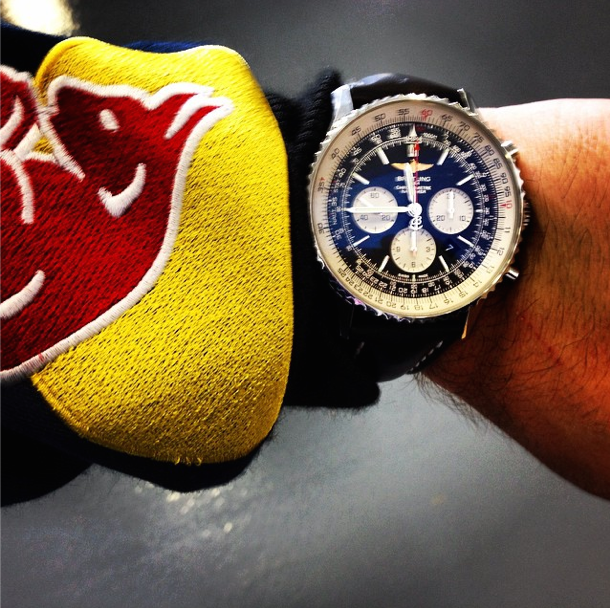
Originally designed by a group of aviators in 1951, the Navitimer is Breitling’s signature watch. Not only that, the timepiece perfectly captures the “instrument’s for professionals” mindset that Leon Breitling held dear when he founded the company in 1884.
I am a far cry from the sort of dashing aristocrat that Mr. Breitling surely had in mind when he founded the now-infamous watchmaker. After donning my flight suit, however, I felt the part. And I wager believing it is half the battle.
No sooner than I had talked myself into my new role as sky stuntman, it was my turn to fly. On the way to the aircraft, Brageot gave me a brief but fully alarming safety briefing on the finer points of bailing out of an aircraft. This from the same man I had seen risking his own life and limb fewer than 24 hours previous. I acknowledged I understood the procedures and I was in the air.
At this point, I could try and explain what it felt like being in that plane. I’m afraid, however, that it would come out as a series of clichés.
In the space of a few minutes we flew through a racing gate, pulled a loop, and performed a hammerhead turn. Before I could really process the stunning revelation of acrobatic flight, we were back on the ground. It was amazing.
At different times in my life, I have maxed a car on the Autobahn, driven a $120,000 supercar over the top of a mountain, and run towards the sound of gunshots. None of that compares to the transcendent excitement I felt during those few minutes in the cockpit.
Putting it all together
Within an hour of landing, I was back at the Texas Motor Speedway to see the conclusion of the racing weekend.
Sitting next to Brageot, watching Nigel Lamb narrowly miss first place in the final race, I felt a new appreciation for the sport. I could never do what pilots like Brageot and Lamb do. I am neither talented nor crazy enough. Getting to participate in their world for a day, though, was something that I will never forget.
For a few moments, hanging upside down in my harness, hands wrapped around the controls of a high-performance race place, and wrist enveloped with $10,000 chronographic masterpiece, I could have been a fighter ace, or Chuck Yeager, rather than a very lucky journalist.
Air racing is a wonderful combination of high tech and old school, and the people who take part seem like characters out of history, rather than modern day professional athletes. And, if nothing else, this once-in-a-lifetime adventure proved to me that despite it being 2014, the world has room for more than just boyracers and motocross stuntmen.
Thanks to Breitling and Red Bull, there, too, is still a place for gentlemen, cads, and flyboys.
